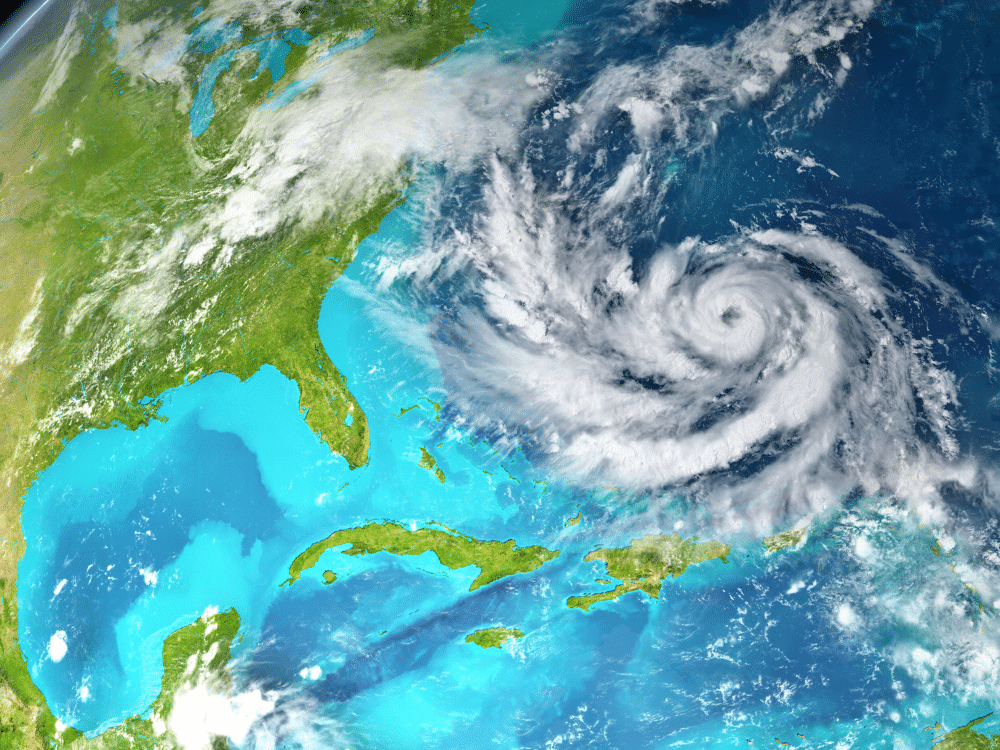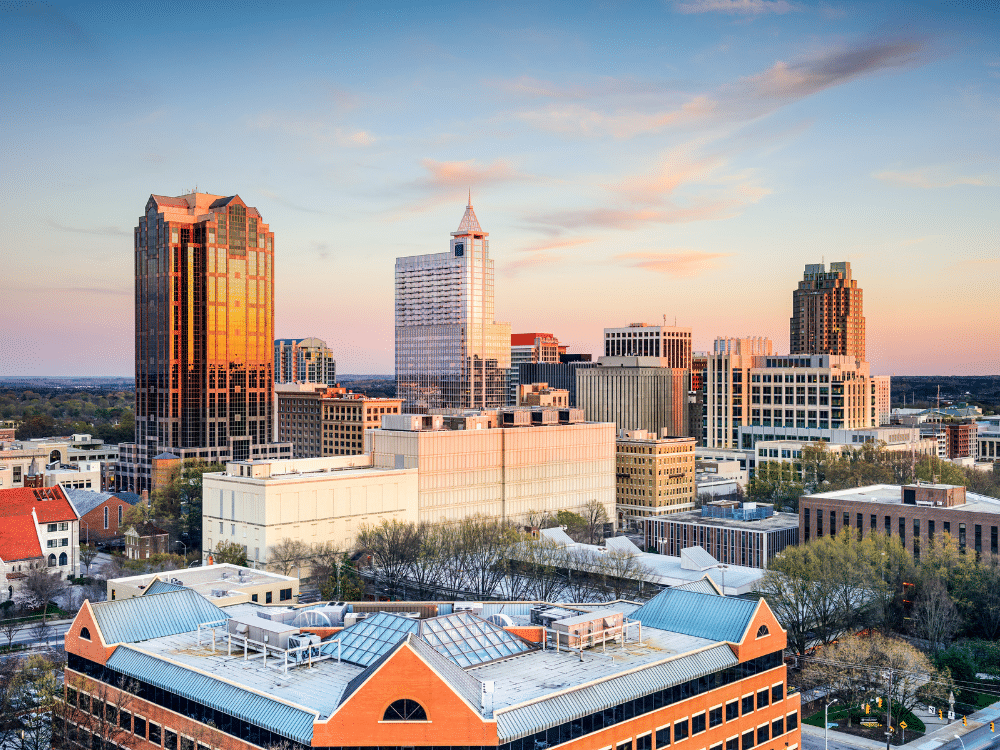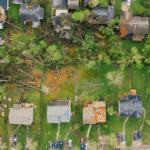
We know hurricane season is bad in North Carolina. In fact, North Carolina is the third most hurricane-prone state in the United States. Of course, coastal towns experience the most damage. But what are hurricanes like in the Triangle Area of North Carolina?
In this post, we’ll cover:
To start, let’s do a brief overview of hurricanes.
What is a hurricane?

A hurricane is a powerful tropical weather storm with high winds.
According to the National Hurricane Center, a tropical cyclone is a rotating, organized system of clouds and thunderstorms that originates over tropical or subtropical waters and has a closed low-level circulation. Both hurricanes and tropical storms are types of cyclones. To learn more about how a hurricane forms, you can check out this article from National Geographic.
Weather experts group hurricanes into categories based on the sustained wind speed of each storm. The higher the category, the stronger and more damaging the hurricane.
A tropical storm has wind speeds anywhere from 39-73 mph, while a hurricane has wind speeds 74 mph and above. Overall, category 5 hurricanes are the highest category with sustained wind speeds of 157 mph or higher!
On the coast, storm surges and flooding are the two most damaging effects of hurricanes. As you travel inland, heavy rains and high winds cause the most severe damage.
On the Atlantic, hurricane season runs from June 1 through November 30th with peak season being mid-August through October.
What are hurricanes like in the Triangle Area of North Carolina?

Before you start to panic, remember that we do not live on the coast. Nevertheless, inland North Carolina can still take on some serious damage.
Two of the most recent hurricanes in North Carolina were Hurricane Florence in 2018 and Hurricane Matthew in 2016. Both hurricanes had subsided to Category 1 level winds by the time they hit North Carolina.
While inland North Carolina did not deal with storm surges like the coast, it did receive a significant increase in rainfall during both hurricanes. In fact, according to the National Weather Service,
“Matthew’s largest impact across the Carolinas was flooding from historic rainfall. Twelve to eighteen inches of rain fell over large portions of interior South and North Carolina.”
But how did Raleigh-Durham fair? According to the official National Hurricane Center reports, Raleigh-Durham only received a max of 7 inches of rainfall during each storm. During Hurricane Florence, Raleigh-Durham experienced a sustained wind speed of 26 mph with gusts as strong as 41 mph.
Our point? You don’t need to worry about your entire roof blowing off. The rainfall and wind speeds specifically in the Raleigh-Triangle match Tropical Storm level, not hurricane level. Why? Because Raleigh-Durham is so much more inland, it is only hit by the outer segments of the hurricane.
Could my home still incur storm damage?

Yes. While not as intense as this video illustration of level 5 hurricanes, your home can still incur damage.
If the fluctuating weather patterns lead to a hail storm, the hail can dent, damage, or even break parts of your home. Your windows, window screens, cars, gutters, and roof are likely to receive the most damage.
Additionally, if a hurricane does hit the coast, you can expect a heavy increase in rainfall in the Raleigh-Triangle area. Sustained rainfall can lead to roof leaks, foundation damage, yard erosion, and wood rot.
On top of that, the increased wind speeds can cause small debris to hit and damage your home. Most commonly, the wind can cause a tree or tree branch to fall and damage whatever is in its path.

Related: A Guide to Hurricane Storm Damage
What does hurricane season look like this year in NC?
Information last updated June 2022
Researchers at NC State University expect 17 to 21 “name” hurricanes on the Atlantic basin this year. The Atlantic basin includes the Atlantic Ocean, the Gulf of Mexico, and the Caribbean sea. The annual average between 1951 to 2021 is 11 named storms.
In 2020, to match the chaos of the year, there were 30 hurricanes, almost triple the yearly average. In 2021, we saw 21 named storms.
Of the number of storms predicted this year, researchers anticipate 7 to 9 could become full-fledged hurricanes. The good news is that, according to research done by Colorado State University, there is a 47% chance of a major hurricane hitting the east coast. Want more good news? We’ve got a free prep guide for hurricane season.
Wonder how your roof is fairing this hurricane season? At Artisan, our #1 goal is to empower you to make the best decisions for your home. If you don’t have storm damage or don’t need repairs, we’ll tell you just that.

